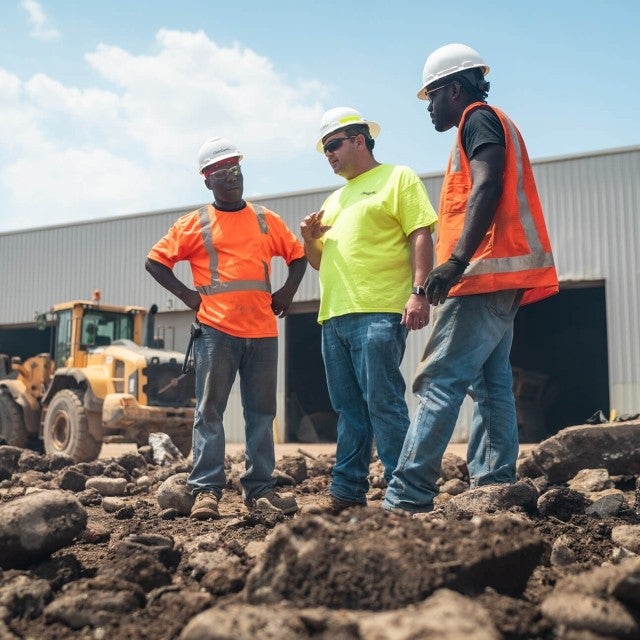How Clean Earth helps
Supporting your soil remediation project and your sustainability efforts
For our soil recycling projects, Clean Earth characterizes the contaminated soil from a project site to determine the volume that could potentially be recycled through our network of treatment and recycling facilities. This upfront waste characterization process presents a multitude of benefits. First and foremost - the environmental benefit. Through proper waste classification conducted by a team of environmental experts, Clean Earth finds more soil that can be recycled versus the often taken easy road of disposing directly into a landfill. Second, this characterization process can at times provide cost savings to the customer. Clean Earth has numerous treatment locations available to service a single project, providing a full-service solution for projects that have various contaminants.
About our service
Map & grid delineation, Your On-Site Management Tool
Once project samples have been collected, and the analytical has been reviewed, our environmental team will develop a delineated map and grid approval document for your entire project site.
The site is broken down into grids, each of which is cross-referenced for eligibility into our multiple fixed-base facilities and/or beneficial use sites. Those results are then analyzed to consider time, cost, and location, ultimately giving our customer the best disposal location for each grid.
We recognize the importance of being environmentally responsible. Clean Earth facilities identified on the delineation map are also closest and most convenient to the project site which ultimately lowers our carbon footprint in transportation.
Consider this as your personal on-site management tool.

Benefits of a map & grid
- Provides the maximum number of outlets per grid to determine the most cost effective solutions.
- Ability to provide and maintain a master facility approval list that allows the customer and their team to identify all the available treatment, recycling, or disposal options available to them for every grid at the project site.
- Establishes horizontal and vertical delineation, providing cross approval into various facilities.
- Isolates contamination that is is a key factor to saving money.
- For all cross approvals, horizontally separated delineations can be completed and the material can be stockpiled for sampling.
- Stockpiles are retested at the facility.
- Minimizes the volume required for hazardous treatment in turn generating a substantial cost savings to the customer.
- Reduces the customer’s environmental liability.
- Identifies facilities that can accept the material and corresponding costs. This allows our customers to estimate how much time will be needed to remove the soil from the site ultimately saving time and money.




